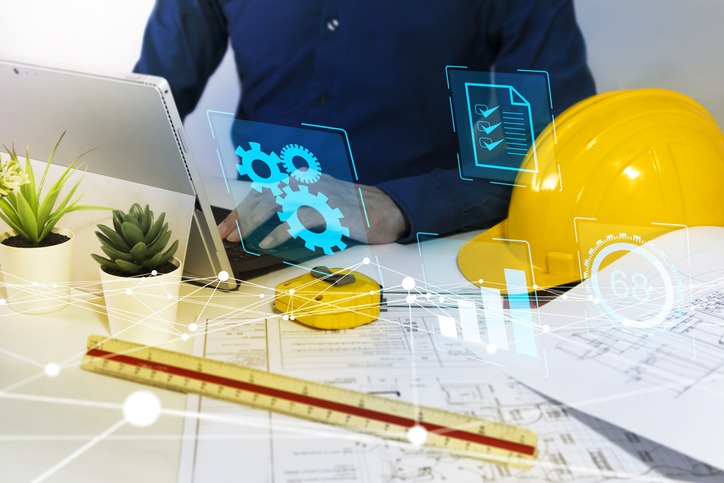Technology continues to advance numerous fields, including restoration services. Modern restoration services have changed because of innovative technological advancements. Professionals use new tools, equipment, and techniques to transform how property damage such as water, smoke, and mold is handled, ensuring properties get restored faster and more effectively.
Are Technological Advances Making Restoration Easier?
Improved Moisture Detection Tools
Restoration professionals benefit significantly from advanced moisture detection tools. Previously, locating moisture required physical checks and could overlook hidden problem areas, leading to mold. Modern equipment, like thermal imaging cameras, swiftly identifies moisture-affected zones, reducing diagnosis time.
Using these advanced devices, technicians can precisely measure moisture levels within building materials. This accuracy allows restoration services to apply more targeted drying procedures, reducing the possibility of future mold growth and damage-related expenses.
Streamlined Communication through Software
Restoration teams utilize specialized job management software, improving communication among technicians, managers, and customers. Cloud-based software allows restoration personnel to share crucial information instantly, manage project schedules accurately, and coordinate tasks efficiently. Enhanced collaboration has significantly improved restoration timeliness and increased efficiency.
Real-time information sharing facilitates immediate status updates, benefiting homeowners and business owners. Clients experience stress reduction and satisfaction improvement by staying updated about repair processes remotely through user-friendly interfaces.
Automation Enhances Efficiency
Automation within restoration processes has considerably increased overall efficiency. Technological advancements automate routine processes involved in restoration jobs, such as drying monitoring, inventory management, and logistical tasks. This efficiency saves time, reduces errors, and frees technicians for hands-on duties needing their expert knowledge.
Professionals benefit from automation enormously because it provides consistent, accurate data. With these improvements in data measurement and reporting, technicians can focus firmly on restoration quality, completing projects promptly and precisely.
Drones Revolutionize Damage Assessment
Drones transform restoration damage assessment significantly. By using drone technology, experts can access hard-to-reach or dangerous areas to evaluate conditions safely and rapidly. High-quality drone footage captures clear visuals quickly, streamlining decisions and repairs.
Drones also enhance safety for restoration professionals by providing accurate assessments without putting technicians in unsafe conditions. Enhanced safety practices result in fewer workplace incidents, positively impacting company reliability and efficiency.
Mobile Apps Improve Fieldwork Coordination
Restoration companies heavily rely on mobile technology to ensure technicians remain coordinated while traveling between sites. Mobile applications keep workers informed about their tasks, routes, equipment needs, and repair actions. Better coordination ensures fewer delays, quicker restorations, and improved customer experiences.
Mobile apps additionally integrate with centralized office systems, facilitating smooth communication between field technicians and support staff members. Restoration technicians using mobile tools report information directly into unified platforms, improving organization-wide visibility.
Artificial Intelligence Implements Predictive Analytics
AI-powered predictive analytics present major enhancements for property restoration processes. Predictive technologies identify potential problems early, enabling restoration teams to intervene proactively and minimize damage effectively. Using predictive capabilities, professionals can significantly minimize restoration costs and project duration.
Artificial intelligence allows restoration professionals to analyze past project data rapidly, noticing patterns and trends. Enhanced knowledge helps teams anticipate future issues accurately, customizing their preventive strategies appropriately for individual client circumstances.
Advanced Cleaning Equipment
Restoration professionals depend on advanced equipment designed to clean water and fire-damaged properties effectively. Techniques such as ultrasonic and hydroxyl cleaning greatly increase restoration efficiency levels. New equipment handles severe contamination, eliminating hazardous substances thoroughly from damaged properties.
Such cleaning tools offer non-intrusive yet effective restoration methods, reducing the need for invasive procedures. Restoration professionals successfully restore items formerly considered irreparable, ensuring cost-effective solutions and reduced losses for clients. Office cleaning companies Austin are also adopting these innovations, highlighting their versatility and effectiveness in maintaining various environments.
Environmental Impact of Modern Restoration Techniques
Restoration services now continuously emphasize using environmentally friendly methods. Sustainable solutions include biodegradable cleaners, efficient equipment, and eco-friendly restoration technology. Companies adopting these environmentally sound practices minimize their ecological footprint and contribute positively to sustainability efforts.
Eco-focused restoration technology helps professionals significantly use fewer harmful chemicals. Harmful substances minimize environmental harm, making restoration processes safer for customers and technicians alike.
Remote Monitoring Technologies
Remote monitoring transforms property damage restoration tasks into smoother experiences. Using remotely tracked equipment, companies ensure thorough monitoring throughout drying and cleaning processes without repeated on-site visits. Restoration professionals promptly receive essential updates with minimal effort from remote locations.
This technology greatly reduces travel, improves responses, lowers labor costs, and enhances customer satisfaction. Clients receive accurate progress updates conveniently, offering peace of mind while professionally reducing stressful situations arising during property recovery.
Technology Offers Competitive Advantages
Companies utilizing these technologies gain considerable competitive differentiation and customer appeal. Providing advanced solutions assures consumers about effective restoration outcomes, improved services, and accountability toward high-quality solutions. Technologically savvy firms experience heightened brand reputation and distinct industry standing.
Clients generally favor companies embracing industry innovations such as drone assessments, improved communications, automation efficiencies, eco-conscious practices, and advanced cleaning procedures. Companies dedicated to progressive growth encounter increased consumer trust, positive reviews, repeat business, and valuable referrals.
Bringing Professional Restoration Services to Austin
In cities like Austin, property damage situations demand professional expertise promptly. Thanks to technology’s advancement in restoration services, residents easily benefit from premium facilities provided by qualified restoration companies Austin TX. Having reliable local professionals ensures emergency circumstances get expertly handled, minimizing property losses effectively.
Local Austin homeowners choose companies known for advanced technological methods like drone evaluations, automated drying techniques, remote moisture monitoring, and environmentally conscious cleaning methods. Utilizing local companies ensures fast response times, timely resolutions, and community familiarity, which are essential in stressful restoration scenarios.
Final Thoughts
Technology advancement significantly influences restoration service improvements, enhancing efficiency, accuracy, eco-friendly processes, and workplace safety. Embracing modern technologies positions restoration companies uniquely within competitive markets, improving their relationship potential with consumers, and achieving superior recovery solutions. Utilizing advanced restoration strategies remains essential for continued growth, improved customer relationships, and sustained operational success throughout the industry.
